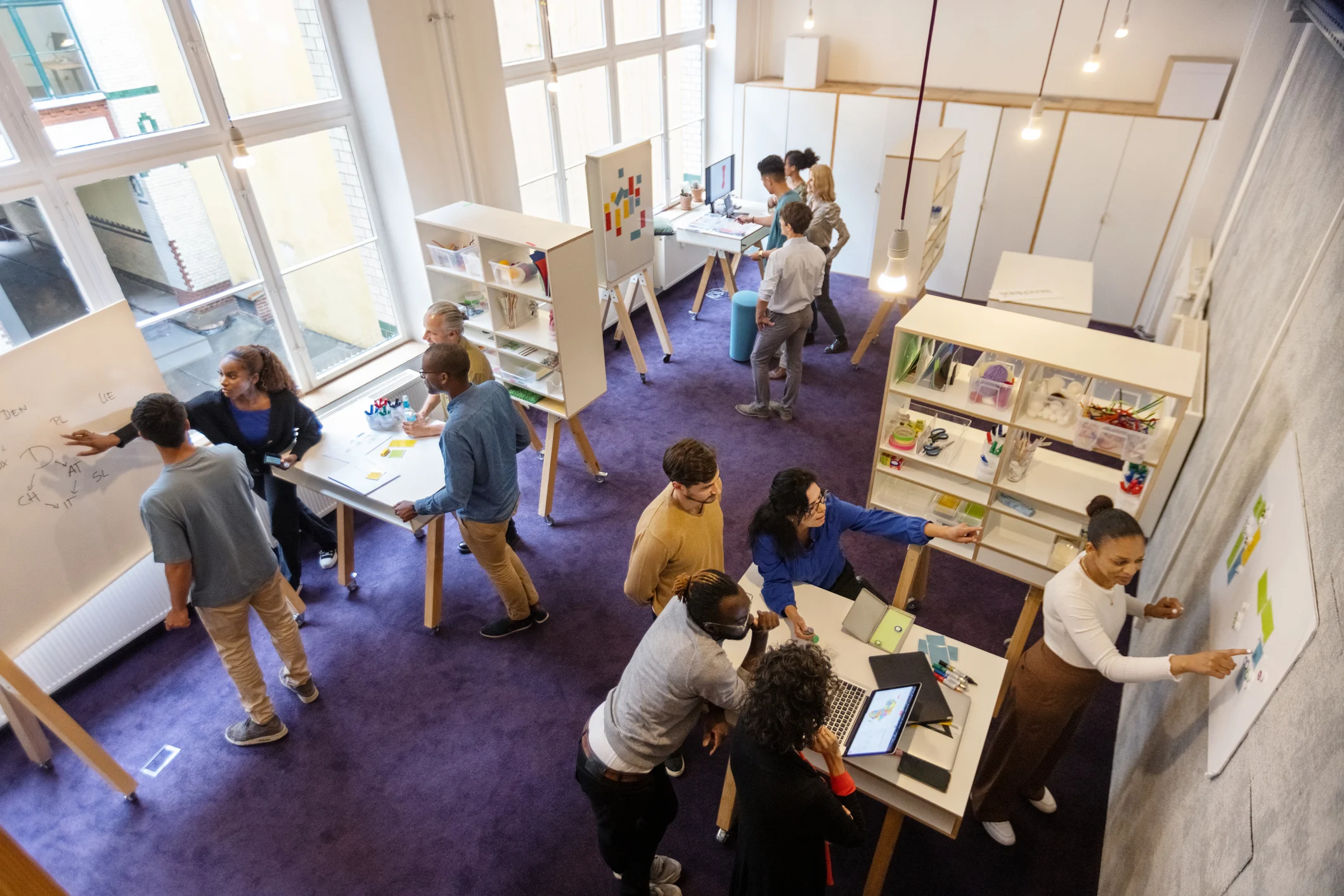

At Startup Studio we are passionate about being change makers in education. Our value proposition is founded in bringing students the kind of learning that they can actually value and apply. We do this by ensuring everything we do is steeped in real world application.
Today, millions of students are sitting in classrooms questioning the value of what they are being told they need to know. They don’t believe it. They do not believe the education they are receiving will ensure job placement or, more importantly, that their education will produce a life of purpose and happiness. With experiential learning we believe that this changes for the better. In fact, it is the beginning solution to the problem.
Here are 3 significant reasons why Startup Studio believes “learning by doing” is the solution to providing change that improves education.
All too often is this fast changing digital age we talk of the growth of autonomous systems where the employee is fast becoming obsolete. Or we see the constant expansion of social media platforms that seem to connect everyone but ensure no one really knows anyone.
The Startup Studio spends significant time with its students talking about the absolute necessity of understanding that story is at the root of great entrepreneurs. For as long as the earth turns it will be the nature of all human beings to want to connect. That is in our DNA. Great companies know this and create value propositions that ensure they connect with their markets. They do it through great story-telling that they call branding.
Classrooms that are filled with academic approaches to learning ensures there is NO connectivity. It is simply information forced on the students in a rubric fashion where it assumes a “one size fits all” approach. After all, the teacher is burdened with having to meet the requirements of the grading system. As long as the student is measured by GPA and SAT scores, (BTW – We believe that is going to change very soon) then teachers are forced to use these scaled systems that have no personal connection to the students.
On the other hand, experiential learning does the complete opposite. It makes the learning personal to the students because experiential learning, by nature, means people are in it. For example – our school program takes the student out of the classroom and places them in companies in their communities. They spend an entire day learning all the realities of that company directly from the entrepreneur who built it. (They actually have to sign NDA’s before the day begins because we want to ensure they get full access – even the financials). They hear the good, the bad and the in between. They see first hand that it is about human beings and that at its core, it is just people trying to make a better life for themselves. Now it has real meaning to the student. Then the company gives them a very real problem to solve.
Now when we are back in the classroom and students are asked to go figure out how SWOT Analysis works they are highly motivated to becoming experts on this subject. Why? Because they can use it. Moreover, they can use it to make a difference in the lives of the human beings that gave them full access and trusted them to solve the problem in the first place. There is connectivity.
This one is simple. Think about everything you have learned in say the last say 5 years as an adult. How often do you come up against a problem and decide to jump on You Tube to find your solution? I do it all the time now. I am a songwriter and producer. Whenever, I cannot figure out how to use a specific function in my recording software or need ideas on a chord progression it has become beyond easy for me to go to multiple sources and get what I need quickly. I have done this for things as simple as changing the filter in my refrigerator. Once I am done watching the two minute video I am educated for life on that small thing I needed to know. Why do I learn from these videos so fast and easy? Because it directly applies to my life. I am learning to solve a problem that is personal to my own success and technology has made it possible for that education to be sitting right there, whenever I need it.
Application to a students interests, passions and, ultimately, personal success is a critical part of customizing education so it starts to make sense to students. That means we need to learn each student as an individual – not as one large class of people that are batched together as if they all should act and think alike. Let’s go back to the example of my students learning SWOT Analysis. They are applying the learning to solve the problem they have been given real world access to. Why? Firstly, because they care and it matters to them now because it is real. Secondly, there is a very real application for what they have just learned. SWOT Analysis just became a tool they can use to achieve personal success rather than an academic exercise in a rubric all built to simply get them a grade.
One of the great problems of “modern education” is that schools are being forced to find ways to ensure students get good grades. Schools need to be “A” rated if they want to stand out as a great public school or they need to provide their school owners with that “90% pass rate” and the list goes on and on. Of course, all schools should strive to be the best school possible but the merit by which they achieve it should not be anchored in grades and, right now, it is. This is a real problem. Only some students are great test takers. Only some students are good studiers. Only some students are strong on cognitive learning and academic thinking. Why then on – God’s Green Earth – (a good Irish phrase) are we batching students into one system, forcing them to achieve the best grades possible and then holding that as the only measure by which our school is rated “good”. It is no wonder kids hate school.
Take a look back on your last 10 years. I am certain you will agree that your greatest learning came from failure. I have yet to meet a business man or woman that will tell me they run great companies because of what they learned in college. Ivy league or not, all entrepreneurs learn through failure. It is the best teacher. What better place to learn through failure than school. Surely the time to let our children fail is when the stakes are lower – not higher.
Experiential learning is exactly that process. It lets the student do something real and experience it first hand. It allows them to fail at it and then analyze why that failure occurred and then pivot into new approaches. The ability to pivot might just be one of the most important skills our children can have going into an unpredictable 21st century job market. Technology assures that change will be coming faster and faster and employers and entrepreneurs are going to need people around them that know how to change ahead of the curve. Therefore, we must build school environments where “learning by doing” is the rule and not the exception. If we do that our students might actually get a chance to find out who they really are and what makes them tick!
At Startup Studio our brand line is “Learn to Start”. If we are going to be sincere in delivering change so students can find the most fulfilling lives possible, then that has to be what “start” refers to. We must begin that journey by realizing that a change in education is rooted in these 3 realities.

Gary is a visionary entrepreneur and the founder and CEO of Learn to Start
LEARN TO START
connect with us
Get in touch and ask us a question about any aspect of Learn to Start.
This site is protected by reCAPTCHA. The Google Privacy Policy and Terms of Service apply.
© Startup Studio LLC | All rights reserved | Legal Policies